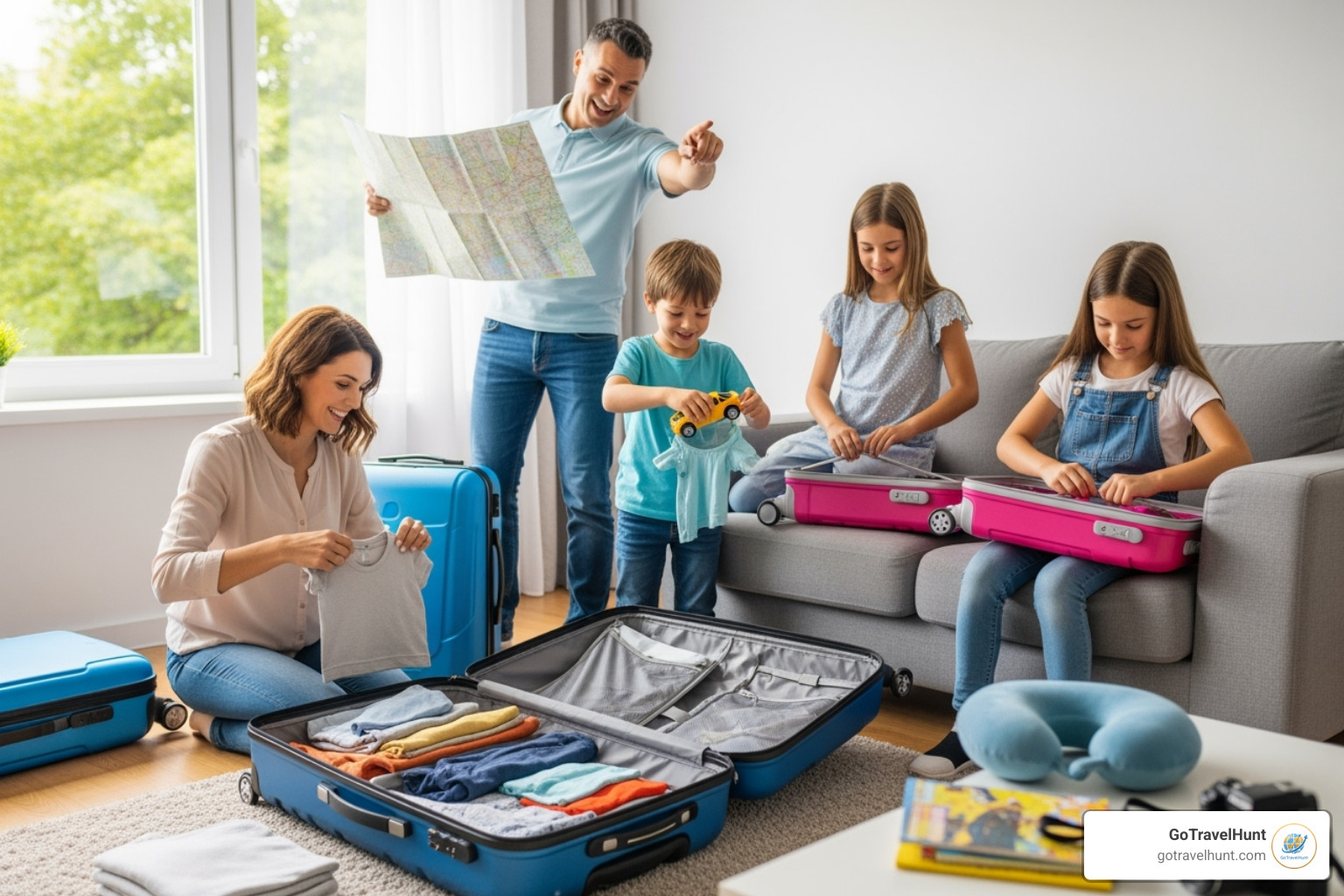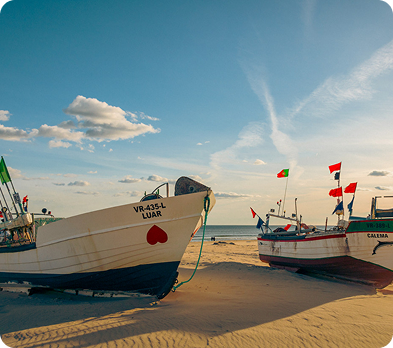How to travel with kids: 5 Genius Stress-Free Tips
Why Learning How to Travel with Kids Opens Up a World of Possibilities
How to travel with kids successfully comes down to three core elements: thorough planning, flexible expectations, and smart strategies. Here’s what you need to know:
- Plan ahead: Secure passports, book family-friendly accommodations, and involve kids in choosing activities.
- Pack strategically: Prioritize carry-on essentials like extra clothes, snacks, medications, and entertainment.
- Choose age-appropriate destinations: Match locations to your children’s interests and developmental stages.
- Maintain routines: Stick to regular sleep and meal schedules as much as possible.
- Build in downtime: Avoid overscheduling and allow time for rest between activities.
- Prepare entertainment: Pack a mix of screen-free and digital options to combat boredom.
Family travel is booming. In 2023, 83% of parents planned to travel with their children, with the global family tourism market projected to hit $3.15 trillion by 2032. The top motivations are creating memories (85%), exposing children to new cultures (70%), and relaxing together (60%).
However, challenges like keeping kids entertained (55%), managing sleep schedules (45%), and dealing with picky eaters (35%) are common. The good news is that with the right preparation, these obstacles are manageable.
As the founder of GoTravelHunt, I’ve used my project management background and personal travel experience to create this guide. Successful family trips require a systematic approach—careful planning, smart resource allocation, and built-in flexibility.

How to travel with kids terms explained:
The Ultimate Pre-Travel Checklist: Planning for Success
The difference between a stressful trip and a wonderful adventure often comes down to what happens before you leave home. When we talk about how to travel with kids successfully, planning is everything. A remarkable 75% of parents start planning family vacations at least six months in advance, securing better deals and building excitement with their kids.
Involving children in the process—even with small choices like picking an activity or packing their own backpack—teaches responsibility and builds anticipation. Kids who feel invested in the trip tend to complain less.

Essential Paperwork and Legal Considerations
Before packing, tackle the paperwork. In the United States, passports for children 15 and under are valid for only five years, and you must submit a new application each time. Check expiration dates early, as many countries require passports to be valid for at least six months beyond your planned return date.
If your child is traveling with only one parent, a signed consent letter from the non-accompanying parent is crucial to prevent delays at borders. The principles for this are similar to those in the international adoption process. Parents with shared custody should also carry copies of legal custody documents to clarify parental authority and prevent complications related to international child abduction.
Packing Smart: A Parent’s Guide
Our golden rule: always pack your child’s essential items in your carry-on. If checked luggage goes missing, you won’t be scrambling for specific formula or diapers.
Your carry-on should include a compact first-aid kit (thermometer, pain reliever, antibacterial cream, antihistamine, bandages), at least one full change of clothes for each child (plus a spare shirt for you), and two days’ worth of diapers.
Packing cubes are a lifesaver; assign each child a color to keep belongings organized. For comfort and entertainment, we never travel without a mini sound machine, a portable door lock for hotel room security, and an external charger. A Yoto Mini with kids’ travel headphones offers screen-free audio, while a small bag of LEGOs or a Kindle e-reader provides quiet fun. Don’t forget essentials like leak-proof water bottles, carabiners for clipping items to bags, and toothbrush covers.
For babies, the Kidco Peapod pop-up tent creates a safe sleeping space anywhere, and bibs with sleeves protect clothes from messes.
Choosing the Perfect Destination: How to travel with kids of any age
The best trip is one that matches your child’s passions.
- Ages 0-3: Focus on easily navigable places with good infrastructure. Beach resorts with family-friendly amenities are a great choice.
- Ages 4-7: These kids thrive on interactive experiences. Think Australian wildlife encounters or the hands-on history and food of Italy. In Australia, the Brisbane Hilton is a central, budget-friendly base.
- Ages 8-12: This is the sweet spot for adventure and cultural immersion, like African safaris, exploring Greek ruins, or visiting Japan. For cultural immersion in Rome, the Albergo del Senato puts history at your doorstep.
- Teenagers (13-18): Balance independence with family time in culturally rich cities like Paris or on multi-country trips through Southeast Asia. In Paris, the Hôtel de Londres Eiffel offers multi-room setups that give teens space.
While theme parks (45%), beaches (35%), and national parks (25%) were the most popular family destinations in 2023, always prioritize your child’s specific interests.
Budgeting for Your Family Adventure
The average family spends $1,500 on a domestic vacation and $4,000 on an international one, but great trips don’t require unlimited funds.
Traveling during the shoulder or off-season dramatically slashes costs. We also use travel credit cards to accumulate points and miles, which has funded some of our best trips. Since the average family spends $150 per day on food, we pack our own snacks and reusable water bottles to avoid overpriced tourist-trap food. Choosing accommodations with kitchenettes also significantly reduces dining expenses.
For more detailed strategies, see our expense savings tips for traveling with your family out west.
How to Travel with Kids: A Step-by-Step Guide to the Journey
The journey itself—by plane, train, or car—is where the adventure begins. With the right approach, transit can become a memorable part of your trip.
At the airport, build in extra time. The TSA allows children 12 and under to keep their shoes on, and you can gate-check your stroller. Explaining the security process to kids beforehand reduces anxiety. For boarding, we send one parent first to set up the seats with toys and bags, while the other boards last with the kids. This minimizes restless time on the plane.
For road trips, consider driving overnight. Our parents would transfer us from our beds to the car, and we’d wake up at our destination. For daytime driving, stop every two hours to let everyone stretch. Never leave a child alone in a car.
Conquering the Flight: In-Air Tips on how to travel with kids
Our secret weapon is a “Mary Poppins” bag of novelties not usually allowed at home, like slime, play putty, and special candy. The newness keeps kids engaged. We also rely on our Kids’ Kindle for Travel and the Yoto Mini + Kids Travel Headphones for screen-free audio. For screen time, do what works for your family’s sanity—no judgment.
To combat ear pressure during takeoff and landing, have babies and toddlers nurse, take a bottle, or suck on a pacifier. Older kids can chew gum or sip a drink.
For safety, the American Academy of Pediatrics recommends buying a seat for children under 2 and using an FAA-approved car seat. While lap infants are allowed, a separate seat is safest. Belt-positioning booster seats are not permitted on planes. If your child is flying as an unaccompanied minor, check the airline’s specific age and documentation policies well in advance.
For babies and toddlers, you can bring breastmilk and formula through security in quantities over 3.4 ounces if you declare them. Booking flights during naptime and requesting a bassinet row can make the journey smoother. For more tips, the AAP’s Flying with Baby: Parent FAQs is a great resource.
Keeping Everyone Happy: Entertainment and Snacks
Variety and novelty are key to keeping kids entertained. Our screen-free favorites include puffy stickers, the Melissa & Doug On the Go Water Wow! reusable painting books, and magnetic tins or small bags of LEGOs.
Classic games like “I Spy” are great for flights and road trips. We also teach our kids the “Red Light, Green Light” game as a fun but critical safety tool for crowded places. When you need a digital option, the Alma Train Game from PBS Kids is a good choice.
Give each child their own backpack with a small new toy and a favorite book. For snacks, pack more than you think you’ll need. Bring a mix of healthy options and fun treats, and fill up your Kids travel water bottles after security.
Essential Gear for On-the-Go Comfort
The right gear makes travel manageable. Prioritize items that are lightweight, durable, and multi-functional.
- Travel Strollers: Gate-checking a stroller and car seat is free on most airlines. A Lightweight umbrella stroller or a micro-stroller like the Pockit Air is invaluable.
- Baby Carriers: A Soft-sided baby carrier keeps your hands free in busy airports and can help lull a baby to sleep.
- Booster Seats: For older kids, inflatable booster seats like the Ride Safer booster vest or standard Inflatable boosters are lightweight, packable alternatives to bulky car seats.
- Portable Cribs: A travel bed like the Kidco Peapod provides a safe, familiar sleeping space in hotels or rentals.
- Luggage: Invest in quality lightweight luggage that can withstand the wear and tear of family adventures.
Thriving at Your Destination: Health, Safety, and Fun
Once you’ve arrived, the key to enjoying your trip is keeping everyone healthy, maintaining a semblance of routine, and remembering to have fun.

To manage jet lag, don’t overschedule your first day. Focus on natural daylight, easy meals, and an early night. A few days before departure, start gradually shifting sleep schedules toward your destination’s time zone. While travel disrupts normal patterns, keeping sleep and meal schedules as consistent as possible helps prevent meltdowns.
For dining, look for kid-friendly restaurants with shorter wait times and dine early. Bringing a small snack or coloring book helps bridge the wait for food. Most importantly, build in downtime. Aim for one or two main activities per day and leave the rest flexible. Kids remember the spontaneous moments, not a packed itinerary.
Health and Safety First
Proactive health and safety measures are crucial. Schedule a pre-travel doctor visit at least a month before international trips to discuss necessary vaccines or medications.
Assemble a comprehensive travel medical kit with any prescription medications (plus extra), pain relievers, antihistamines, and supplies for water safety and wound care. A good checklist can be found in this travelers’ health kit guide. Be mindful of food and water safety; in some countries, stick to bottled water. Use disinfectant wipes to clean high chairs and tables.
For sun and insect protection, use appropriate repellent and apply sunscreen generously and often. For emergencies, always purchase travel insurance for children that covers medical costs abroad. Upon arrival, inspect your hotel room for hazards like exposed wiring or unsafe railings. The AAP provides extensive tips for safe & stress-free family travel that are worth reviewing.
Maintaining Routines and Managing Meltdowns
Managing sleep schedules and picky eaters are top challenges for traveling parents. Try to honor your child’s normal sleep patterns, using familiar items like a mini sound machine to create a sense of normalcy. For large time zone differences, switch to the new schedule as quickly as possible.
Handle picky eaters with patience. Pack familiar snacks to prevent hunger-fueled meltdowns and don’t stress if they choose an unconventional meal at a restaurant. Building in quiet time—whether in the hotel room or at a local park—is essential to prevent overstimulation and allow everyone to reset.
Remember the “Red Light, Green Light” game? It’s a brilliant safety tool. Teaching your child to freeze on “red light” can give you crucial seconds to react in a crowded or potentially dangerous situation.
Frequently Asked Questions about Family Travel
After helping countless families through GoTravelHunt, we’ve compiled answers to the most common questions about how to travel with kids.
What documents do children need for international travel?
Every child, including a newborn, needs their own passport for international air travel. Passports for kids under 16 expire every five years and require a new application each time. Also, check if your destination requires a visa. If a child is traveling with only one parent, a signed consent letter from the non-accompanying parent(s) is highly recommended to prove permission to travel and avoid border delays.
How can I help my child with jet lag?
While you can’t eliminate jet lag, you can ease the transition.
- Before you go: Gradually shift sleep and meal times toward the new time zone for a few days.
- Upon arrival: Get as much natural daylight as possible.
- Stick to the new schedule: Switch to local time for meals and bedtime immediately.
- Keep it simple: Don’t plan major activities for the first day.
What are the best ways to save money on family vacations?
Strategic planning can make family travel much more affordable.
- Travel off-season: Traveling during shoulder or off-peak seasons offers the biggest savings on flights and lodging.
- Book in advance: Secure the best deals by planning at least six months ahead.
- Pack your own food: Bring snacks and reusable water bottles to avoid high prices at airports and tourist spots.
- Book rooms with kitchens: Preparing some of your own meals, like breakfast, cuts down on food costs.
- Use points and miles: Travel credit cards can help you earn free flights and hotel stays, significantly reducing your budget.
For more detailed strategies, check out our expense savings tips for traveling with your family out west.
Conclusion
Learning how to travel with kids is a journey that gets more rewarding with each trip. It requires thoughtful preparation and flexibility, but the payoff is worth it.
Statistics show that 85% of parents travel to create lasting memories, and 70% want to expose their children to new cultures. Research confirms the benefits: 70% of families feel closer after traveling together, and children develop adaptability and cultural awareness.
This guide has covered everything from securing passports to packing entertainment and staying healthy on the road. Each tip is designed to transform a potentially stressful ordeal into a treasured family adventure.
Your children won’t remember every museum, but they will remember the spontaneous moments of connection—the silly games at the airport gate or sharing an ice cream. That’s the real magic of family travel.
At GoTravelHunt, we’re passionate about making family travel easy, stress-free, and affordable. We provide comprehensive guides and resources because we believe unforgettable journeys shouldn’t be complicated or break the bank.
Ready to plan your next adventure? Explore our Best Vacation Spots guides for more inspiration and find the perfect destination for your family. The best time to start creating those memories is right now.












